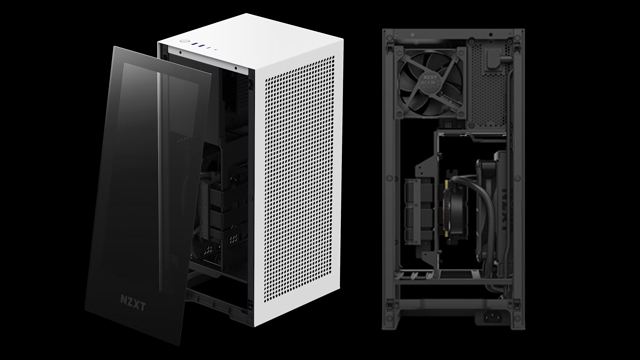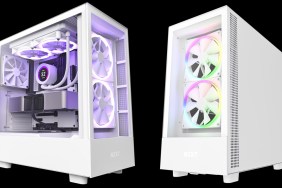NZXT H1 V2 MINI-ITX PC CASE REVIEW.
The NZXT H1 V2 aims to right the wrongs of its predecessor. Following my glowing review of the original case, which I’ve been using daily without issue for over two years now, reports started to flow in about a potential fire hazard attributed to the screws attaching the PCIe riser cable to the case. Over time, NZXT has worked to fix this issue by sending out replacement riser cables and plastic screws. With the V2, the company is no doubt hoping to leave all of those problems behind, while making other improvements to aid better cooling and part compatibility. Does it succeed? Here is my NZXT H1 V2 review.
Welcome to the new H1
For the uninitiated, the NZXT H1 is a small form-factor case targeted at those who want to downsize their PC without compromising on power. It has a small footprint, making it ideal for sitting on a desk, but is tall and so accommodating of full-size graphics cards.
Buy the NZXT H1 V2 on Amazon here.
The V2 model of the H1 is actually a little larger than the original, with 15.6 L of capacity instead of 13 L. This has been done to allow for better compatibility with modern Nvidia and AMD graphics cards, as well as to increase cooling potential. Unless you put them side by side, however, the size increase is unnoticeable.
Improvements inside

Other changes made to the V2 include an additional USB Type-A port on the front I/O which is greatly appreciated. I often find myself needing to temporarily plug in USB drives or Bluetooth dongles and that is much easier to do via the USB ports on the top, as the others are on the bottom with the motherboard I/O facing downward. This makes for an overall cleaner aesthetic that I’m still a big fan of, but it does mean you have to tilt the system to access the I/O while powered up.
There’s also a fan controller which can be paired with NZXT CAM for controlling RGB and fan curves within the software itself. With cooling being a big factor for Mini-ITX setups, I can see this being of interest to a lot of users.
Speaking of fans, NZXT has managed to squeeze in a rear exhaust fan to help exhaust hot air coming from the GPU. This works well in tandem with any potential undervolting (more on that later).
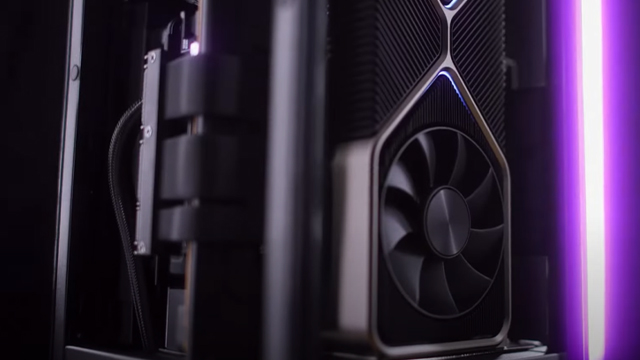
The included PCIe riser cable has also been updated to support PCIe Gen 4 GPUs, so users don’t have to fear any potential bottlenecks with the upcoming Nvidia and AMD (and Intel?) products. What’s more, the V2’s Gold-rated power supply enjoys a 100 W increase over the original with 750 W total power available for more demanding components.
And that is pretty much it for changes, as NZXT has kept the 120 mm AIO cooler and pre-routed cables that make building in the H1 super easy.
As I’m awaiting upgrades from both AMD and Nvidia, I simply transplanted my existing setup of a Ryzen 3700X and RTX 3070 from the H1 V1 into the H1 V2. The process was as painless as I expected, as I simply had to plop the CPU and RAM into the motherboard, drop it into the H1 case and attach the cooler, before then plugging in all of the cables and sliding SSDs into place. Lastly, the GPU is inserted and that’s the full extent of the process.
Playing with power
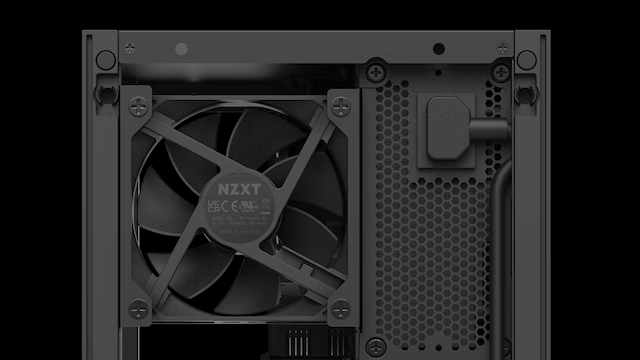
When it comes to performance, with my stock 3700X and undervolted RTX 3070 (stock clocks but lower voltage), I was very pleased. With my fan speeds kept to “Standard” in the BIOS, I enjoyed zero throttling and with very little noise. The included GPU exhaust fan isn’t whiny, which was an initial concern given its small size, and works well to get rid of hot air that would otherwise build up.
My 3700X reaches max temps of 65 degrees under load, while the 3070 peaks at 70 when pushed to the max. Again, I’d recommend looking into undervolting for the GPU, as it can seriously reduce those temperatures without compromising on stock performance. Undervolting also reduces the need for fast fan speeds and so reduces overall noise. Definitely consider it, whether you get the H1 V2 or another Mini-ITX case.
Those looking to overclock may have trouble with this and other Mini-ITX cases. Though pushing the fans to their max on all components can yield some cool temperatures, the noise is expectedly loud.
My biggest pet peeve with the NZXT H1 V2 is how there’s no “Flow” option. I know the company loves its tempered glass, but giving customers the option to go mesh, like with the H510 Flow, would be the best course of action. Here’s hoping the V3 comes with a mesh option or NZXT sells V2 mesh panels separately sometime down the line.
NZXT H1 V2 Review: The final verdict
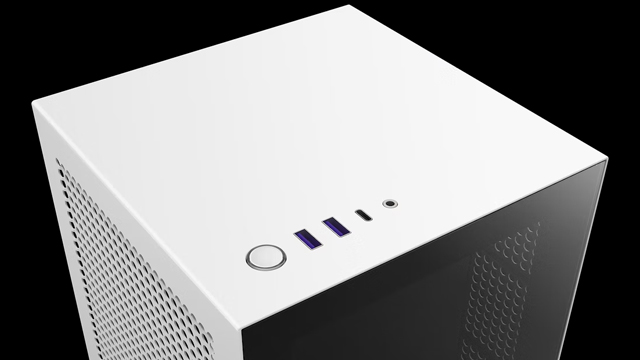
At $399.99, the NZXT H1 V2 bundles a case, power supply, and CPU cooler into a stylish package. If you’re looking for a new Mini-ITX case that delivers in performance and aesthetics, NZXT has crammed big improvements inside this small package.
It might not be the smallest or most premium-built small form factor case out there, but it still saves space on the desk, looks good doing it, and is in stock. To really impress me, however, I’m going to have to see an H1 Flow edition with a mesh front panel for better airflow.
H1 V2 review unit was provided by NZXT.
-
Many improvements.
-
Still a great-looking design.
-
Performance is solid.
-
Ridiculously easy to build in.
-
Provided cooler and power supply are of high quality.
-
Good GPU compatibility.
-
Would love to see a mesh front panel option!
-
Price is relatively high.
